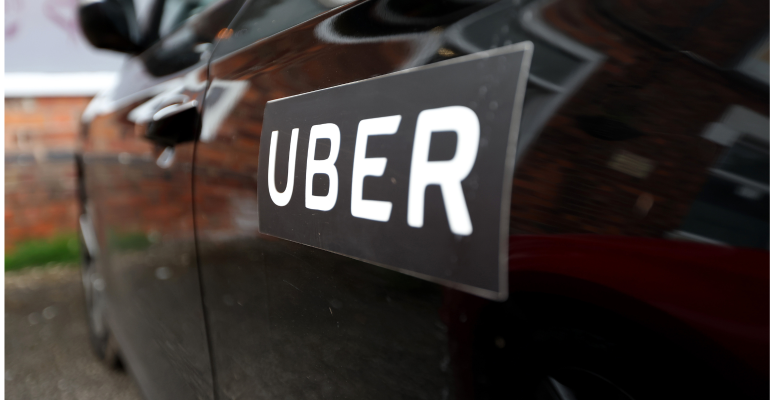Uber Technologies cited grocery delivery as a key area of growth in its fourth-quarter and year-end earnings report on Wednesday, although the company noted that grocery delivery overall remains unprofitable.
In addition, the company cited CPG and grocery advertising on the Uber platform as one of the fastest-growing segments of ad-revenue growth at the company.
“We expect big things from grocery and retail,” said Dara Khosrowshahi, CEO of Uber technologies.
The company did not directly address an analyst’s question about the potential for acquisitions in the grocery-delivery space, after speculation last month that the company could consider a bid for Instacart.
Among the biggest opportunities for the grocery-delivery segment of the company’s business are cross-marketing opportunities with both its core ride-hailing service and its Uber Eats restaurant ordering-and-delivery platform, the company said during the call.
“As we see our users engage with more than one product, those users tend to come back more often, and tend to stick around for longer,” said Khosrowshahi.
The company’s membership program, called Uber One, is also driving increased use of delivery services, he said. Uber One member accounted for almost 50% of delivery bookings in the U.S. — up 10 percentage points, year over year — with what he described as strong retention levels.
Uber is also planning to implement more promotions in which it uses its algorithms to suggest retail purchases to its Uber Eats restaurant delivery customers, Khosrowshahi said. This could include suggesting a bottle of wine or a dessert after a customer has ordered a restaurant delivery, for example. Those customers can then be targeted with follow-up promotions suggesting that they order a top-up grocery shop, or a full weekly grocery-delivery order.
The company said its grocery/retail delivery service is operating at a $7 billion run rate globally, which represents growth of about 40% year-over-year, in constant currencies. Grocery and retail delivery continues to grow through the addition of more retailers and more users. In the past year, the company added Sprouts Farmers Market, Eataly, and Big Lots to its roster of retailer partners in the U.S.
Although the grocery-delivery service is not yet profitable, Prashanth Mahendra-Rajah, chief financial officer, Uber Technologies, said year-over-year margins are improving, and the company sees a path to operating in the black.
“In terms of unit economics for grocery, we feel pretty good about the direction we are headed and how this will grow into a profitable business,” he said. “The trajectory is going in the right direction.”
In addition to growing its retail partnerships and user base, Uber is also focused on improving the functionality of the service, particularly in the area of product searchability, Mahendra-Rajah said.
“When you search for chocolate milk, you [should] get exactly what you are looking for,” he said. “I think the searchability of the catalog and a lot of the basics that we have in grocery can get better and better.”
CPG ad revenue seen growing
Closely related to the growth of the company’s grocery delivery business is the growth of its advertising platform. The majority of its advertisers are local restaurants that seek to reach Uber’s ride-hailing and restaurant-delivery customers, but grocery and CPG advertisers are one of the fastest-growing segments of this business, Khosrowshahi said.
More than 550,000 companies currently advertise on Uber’s platforms, he said, adding that the advertising portion of the company’s business is up 75% in the past year. The company is in the process of building out more robust reporting tools for these advertisers, Khosrowshahi said.
“Any CPG advertiser that wants a growing audience, and a growing global audience, should get in front of our audience,” he said.
The earnings report marked the first time Uber has achieved full-year profitability since its initial public offering in 2019. The company said net income for the year, which ended Dec. 31 hit nearly $1.9 billion, compared with a loss of $9.1 billion for the preceding year. Revenues rose about 17%, to $37.3 billion, vs. the year-ago results.
Uber’s delivery segment — which includes both restaurant and grocery/retail delivery — posted a 6% increase in revenues for the year, to $3.1 billion, and adjusted EBITDA grew $235 million, to $476 million.
**
Uber Technologies cited grocery delivery as a key area of growth in its fourth-quarter and year-end earnings report on Wednesday, although the company noted that grocery delivery overall remains unprofitable. What are still the biggest challenges in making grocery delivery profitable?
Let us know in the comments below, or email your thoughts to the SN staff at [email protected]. Be sure to include your full name and work title.





